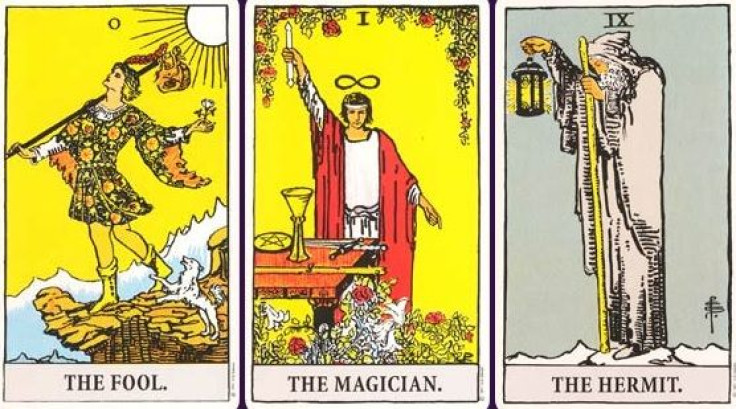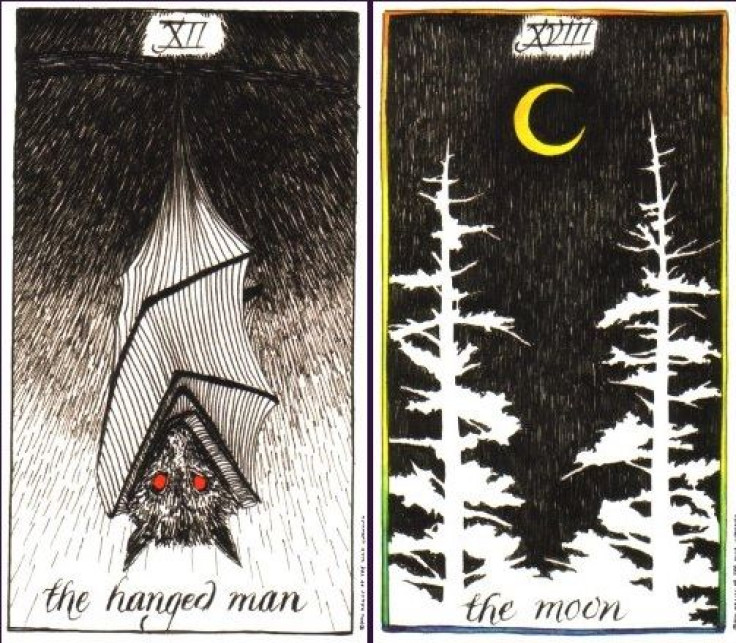What Is Tarot? A Professional Tarot Card Reader Tells All

Angeliska Polacheck of Sister Temperance Tarot is as intriguing in person as she is in her Twitter description, which reads like an incantation: "Writer, soothsayer, silversmith, witch." Voted the best Tarot card reader in Austin, Texas, in 2012, Polacheck, 36, who also deals in antiques, neither advertises nor hangs out a shingle. But people find her anyway.
There was the big, burly truck driver whose sniffles after a reading she first mistook for allergies. The 20-somethings who hear readings they don't like and run off in a huff. The women who married too early and, when visiting Polacheck, grimly accept readings intimating what they already know: It's time to move on.
"I inherited my first deck from my mother," Polacheck told International Business Times. "My dad gave me the cards when I was 11. I studied them and read for friends and family. But I started reading professionally in New Orleans in 1999 at Esoterica [shop] on Dumaine Street."
Reading for strangers was a "trial by fire," said Polacheck. "You lay out the cards and start talking about what’s there. It was revelatory. It blew me away the stuff that would come through."
Although Polacheck has been reading cards for half of her life, she could also be considered part of the "occult revival" Katie J.M. Baker wrote about in Newsweek in 2013. According to the millennials she spoke to, "astrology and tarot ... are their favorite supernatural tools for combating existential angst."
But Polacheck says that Tarot only recently became cool again. "For a long time, if you brought it up, people would pooh-pooh you," she said. "They'd make fun of it for being cheesy, New Age-y. I don't see that happening anymore, but for a while I was scared to come out of the broom closet and tell people because I thought people would make fun of it."

The Tarot is a pack of 78 playing cards that have been around since the mid-15th century in Europe. From the late 18th century on, Tarot cards have been used both for divination (predicting the future) as well as a kind of guided meditation.
The cards are categorized either as Major Arcana or Minor Arcana. The 22 Major Arcana cards depict images like the Hanged Man, the Devil, the Wheel of Life and the Fool. The 56 Minor Arcana cards are suit cards, but rather than the spades, hearts, diamonds and clubs found in a traditional deck, there are wands, swords, cups and pentacles.
There is a plethora of Tarot deck styles, from the traditional Rider-Waite deck to a more contemporary hipster favorite -- the Wild Unknown deck. There are also various ways to spread the deck and "read" it. The person asking questions of the tarot reader (or the deck, if she is doing the reading herself) should steer clear of questions with yes or no answers and let the cards guide the way -- to what is happening or may happen if they continue to pursue a path.

"The Tarot is a collection of symbols or archetypes that represent all of human experience," explains Polacheck. "I describe the Tarot as the map of spirit, heart and soul. You lay it out so you can get a bird’s-eye view."
Polacheck doesn't consider reading someone's deck to tell the future as ethical, although she will warn someone if something in their spread suggests that if they continue along a certain path, the outcome won't be good.
"I’m a believer in accountability," she said. "We create our reality, but we can use the symbols as guideposts to help us grow and evolve rather than trying to figure out what’s going to happen. Things are not predestined. We have power over what we experience. "
That's why she prescreens clients and, unlike when she first began reading, won't accept just anyone, particularly if it seems that they only want to be entertained or want easy answers: "I’m only willing to work with people who are on a spiritual path, people who are ready to do the work with me," she said.
Who exactly is paying the $100-an-hour fee she charges for a Tarot reading?
"My demographic is all over the place," says Polacheck. She says that most of her clients are women, but that she has a "healthy" number of male clients. "People might assume that the majority of people who visit me would be bohemian artists into Tarot, and it's not so much that at all. I have soccer moms. Lawyers. People from East India, Asia, poor single moms, young guys in college."

A lot of people visit her who don't feel comfortable seeing a therapist, confirmed by one reviewer of mostly glowing Yelp reviews: "I just booked my 3rd appointment with Angeliska in 6 months. She gives the most beautiful and loving readings I have ever experienced. It's cheaper than therapy and twice as effective."
And like a therapist, Polacheck takes notes during readings because she has many repeat clients and likes to see how things might have evolved -- or devolved -- from one reading to the next.
"It can be intense and emotional," said Polacheck. "Like a hyperaccelerated therapy session. I buy tissues in bulk. It's like giving a massage. You might have an old injury or wound, and you break it up wherever there's blockage."
When asked what she would say to skeptics, Polacheck says, "I think a certain amount of skepticism is healthy. But there are two kinds: skepticism based in a discerning questioning mind and skepticism based in fear."
How does she explain the randomness of cards with specific, individualized readings she gives?
"Cards don't come up by accident," she says. "But I often get, 'How are you in my head right now?' The bottom line is nobody really knows. It's the unknown. I've worked with the cards half my life. I don't know how, I just know it's effective."
© Copyright IBTimes 2024. All rights reserved.












